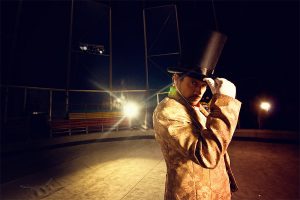A Hunger Artist by Franz Kafka is written from a Third Person (Omniscient) point a view because we are able to distinguish how more than one character feels or thinks. For example, speaking for the hunger artist, “He had looked forward with delight to the crowd pouring around him, until he became convinced only too quickly-and even the most stubborn, almost deliberate self-deception could not hold out against the experience-that, judging by their intentions, most of these people were, time and again without exception, only visiting the menagerie”
When one of the girls had helped carry the Hunger Artist “lay against one of the women, who appealed for help with flustered breath, for she had not imagined her post of honor would be like this”
When the Impresario had to deal with the hunger artist’s tantrums, “… the hunger artist responded with an outburst of rage and began to shake the cage like an animal, frightening everyone. But the Impresario had a way of punishing moments like this, something he was happy to use.”
This story is Third Person point of view because the main character isn’t telling his own story. There are no use of the words “I, I’m, me, my, etc.”. Someone else is telling his story. These are all examples of Omniscient Third Person point of view because they provide insight on more than one character; their intentions, thoughts, and reactions. When reading this story I was very confused as to why a guy who starves himself was considered an art. Regardless, I found it amusing how it pained the artist to be around people who misinterpreted his art, but how that very scrutiny is what kept his career going. He thrived off the attention of others. He saddened as time passed stuck in the same cycle of being misunderstood and the need of acknowledgment.





